
Painting Salvador Dali “Old age of William Tell” – a collection of dissonances and allusions. The first thing that the view clings to is the desert. Smooth, sun-scorched space. Above the horizon – blue, below – sand. Dali generally liked to put his insanely brilliant insights into the framework of sand and sky. But a less deserted and more animated land than the scene of this picture is hard to imagine. This patch of space is a collection of objects and the constellation of figures.
You could say – people, but to calculate the number of people depicted by the master here is not an easy task. Many of the figures are repetitive images, phantoms of themselves. If you turn to the opinion of experts, you can find out that an elderly man with a woman’s breast in the center of the canvas is William Tell, an ominous personification of his father – a tyrant and a tyrant. Father, who sacrificed his own son. Dali reinterpreted the image of the legendary Swiss archer, invested in his children’s grievances and bitterness of family conflict. This character appears in several paintings of the master, creating a new mythological space.
The scene is outlined by several picturesque ruins in antique style. Roses remind us of the thorns rather than of Eden. The curtain – a stretched sheet – shyly hides from the viewer part of what is happening. Two female figures, clinging to the central character, clearly win back some erotic sketch. The couple leaving the arena, crushed by shame and despair, is the son of Wilhelm with his chosen one, expelled by his father from Paradise. When they leave, they leave a part of themselves here: two lifeless bodies in the left part of the picture are also they. The sacrifice brought for the right to leave. On the horizon of exiles waiting for a couple, embraced in a strange dance. Perhaps the dancers against the background of the rock are the future of the new Adam and Eve.
And, finally, the last living being that is present in the picture and is simultaneously outside it. A lion. More precisely – the shadow of a lion. An observer, a judge, an executioner? You can treat this image in different ways, but, definitely, this is a sinister touch, concealing a threat and a hint of retribution.
One of the architectural elements in the right part of the picture is decorated with a bas-relief with a characteristic Napoleonic profile. The emperor turned away from what was happening on the stage. His gaze is directed towards the rocks and dancers, to the future.
The rose at the lower edge of the blade is trodden into the sand. Perhaps, it will remind the viewer of the irreversibility of time, which for someone will be a doctor, and for someone – an executioner. The departed are young. Wilhelm Tell is old. In this light, the lion resembles a scavenger hyena, frozen on the shore and waiting, when the corpse of the enemy floats along the river.
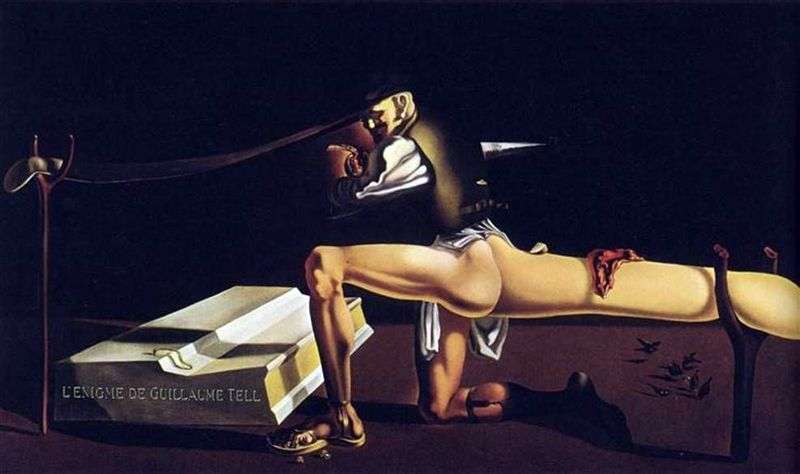 The Mystery of William Tell by Salvador Dali
The Mystery of William Tell by Salvador Dali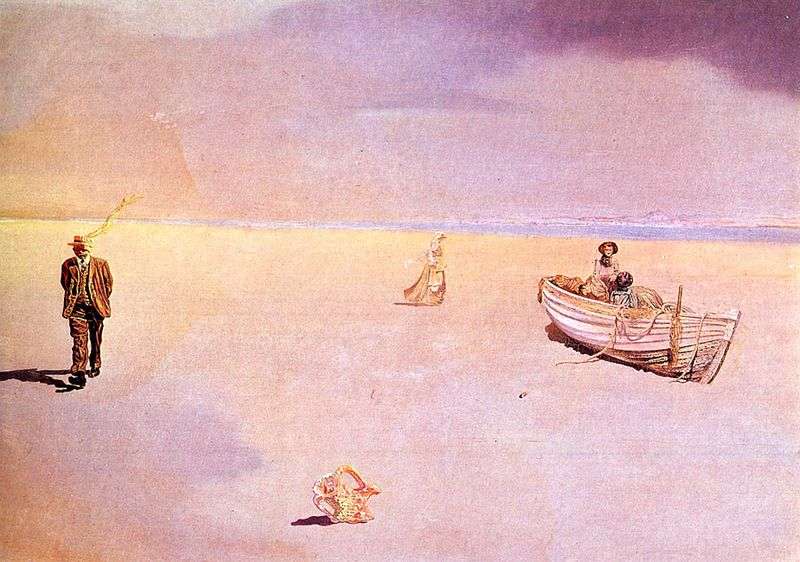 Astral paranoid image by Salvador Dali
Astral paranoid image by Salvador Dali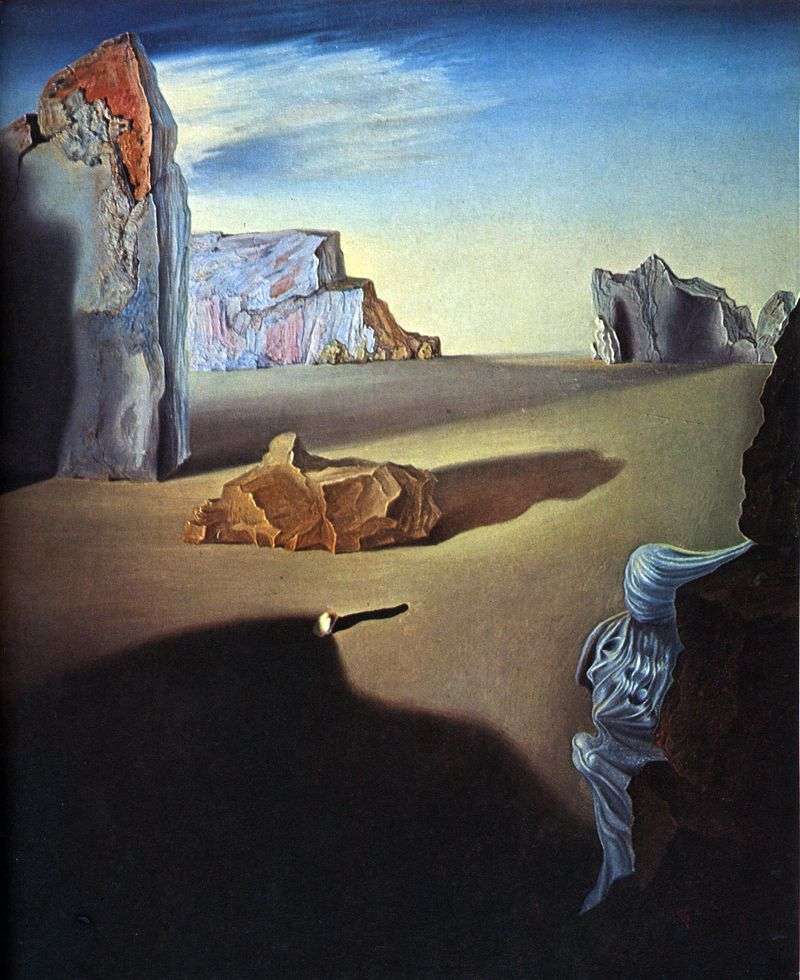 Shadows of the melting night by Salvador Dali
Shadows of the melting night by Salvador Dali Atavistic ruins after the rain by Salvador Dali
Atavistic ruins after the rain by Salvador Dali Atomic Leda by Salvador Dali
Atomic Leda by Salvador Dali Great masturbator by Salvador Dali
Great masturbator by Salvador Dali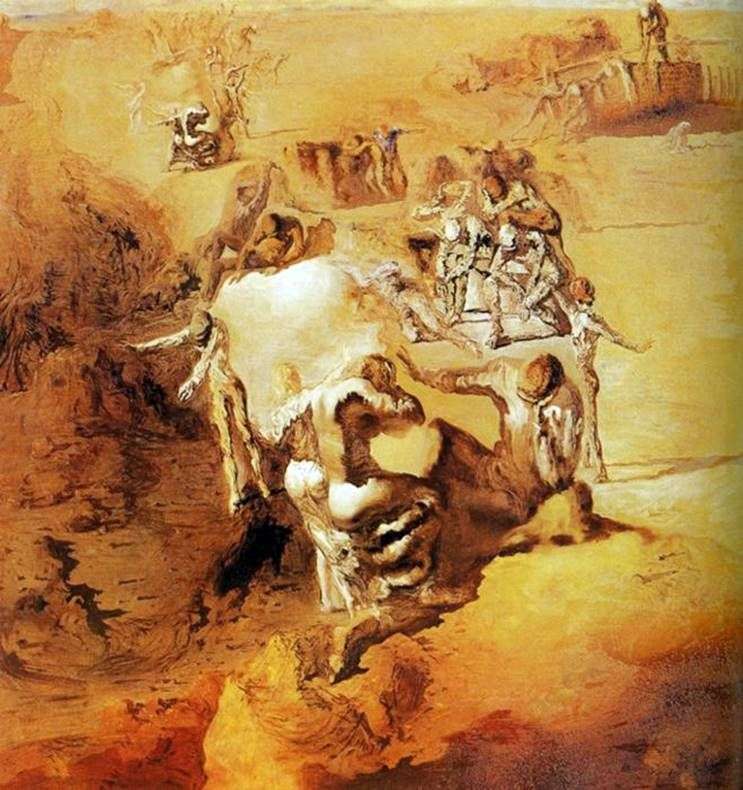 Big Paranoid by Salvador Dali
Big Paranoid by Salvador Dali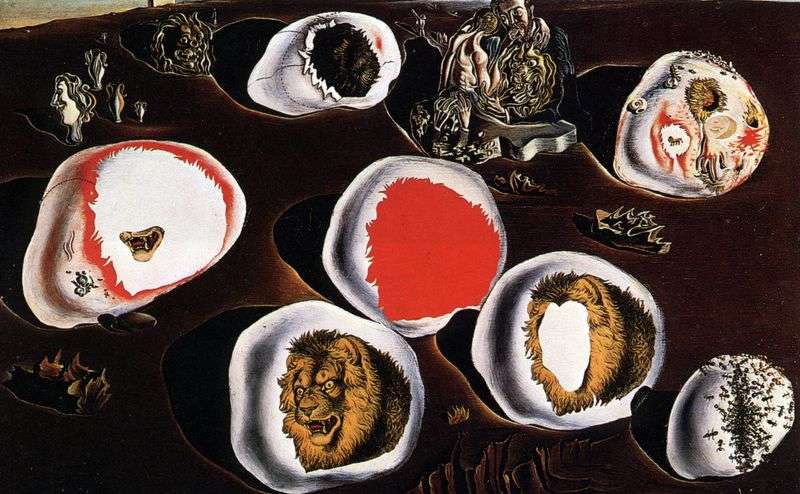 Adjustability of desires by Salvador Dali
Adjustability of desires by Salvador Dali